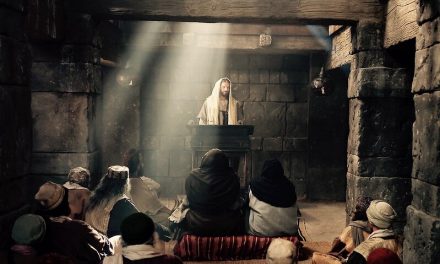The readings for this Sunday may be found on the USCCB website:
“To turn from everything to one face is to find oneself face to face with everything” – Elizabeth Bowen
The Gospel reading for this Sunday picks up Luke’s infancy narrative at the point where the shepherds go “in haste to Bethlehem” to find the savior Messiah of whose birth the angel of the Lord told them as they were tending their flocks in the fields. In their case, going “in haste” not only meant abandoning their flocks, but traveling unlighted roads in the dark of night. Whatever they experienced left little room for deliberation or discernment; though they “were terrified,” they conferred with one another and resolved to go to Bethlehem, seeking the newborn child that would be lying in a manger.
One wonders how the experience of finding Mary and Joseph might have compared with beholding the angelic host. The angels appeared to them, spoke to them, and filled the heavens above them with their praises. They made themselves known and heard, but they did not appear in any human form. There seems to be no question of touching them, or looking at them directly, face-to-face. Angels are often depicted with faces in art, and even described in some scriptures as having eyes, but there’s little indication that the visage of an angel invites one to interpersonal exchange, let alone the recognition of a common nature. How then must they have felt when Mary and Joseph looked up and met their gaze? After having beheld the cosmic spectacle of the angels filling the night sky, what must it have been like to look into the manger and see the face of a swaddled newborn?
Surely they must have been puzzled, at least to some extent. The glory of the angels was overwhelming; if it filled them with wonder, it also filled them with fear. Yet they came not merely to convey a message and give orders, but also to glorify the One whose glory infinitely exceeds their own. And what is the pretext of this awe-inspiring display? What occasions the revelation of their worship? The birth of a human child, to human parents huddled around a feeding trough, surrounded by animals. The shepherds turn from the radiance of the angels to human faces, and to the face of a baby. They center their attention upon this human face because all the angels fix their gaze upon it. The contrast between the angels and the baby could not be greater; yet it is the baby who fills the angels with wonder and praise.
Christians believe that in Jesus, God assumes human form. This mystery has many dimensions—so many in fact, that Thomas Aquinas thought you could go on thinking about it forever—but one of the most significant, it seems to me, is that with the birth of Jesus, God now has a face. The idea of “the face of God” appears in the Bible long before Christ’s birth. The first reading mentions the phrase in the context of the prescribed blessing for the people: “The Lord bless you and keep you, the Lord let his face shine upon you.” The responsorial psalm echoes this blessing when it proclaims, “May God have pity on us and bless us, may he let his face shine upon us.” I also think of Moses speaking “face to face” with the Lord in Exodus, such that his actual face become so radiant that the people could not look upon him. The idea that “no one could see God and live” was doubtless still in the minds of the Israelites in Jesus’ time, and yet here we have the humblest of the people – the shepherds who live in the open, with the animals – looking not only at angels in the heavens but the presence of the eternal God himself in the face of a baby.
What is going on here? Has God suddenly “shrunk”, become less than He was before? Is God diminishing? Or is His greatness becoming more fully and definitively evident? In the second reading for this Sunday, St. Paul expresses the latter view: “when the fullness of time had come, God sent his Son, born of a woman.” This moment the shepherds are beholding is “the fullness of time,” the climax of the true history of the world, which is the history of God’s self-revelation to creation. St. Paul also stipulates the purpose of this culminating moment: “so that we might receive adoption as sons.” “Son” denotes an intimate relation, one that implies an identification of self in the other. God created us to establish this sort of familial, intimate relation with us. In beholding the face of God in the face of the infant Jesus, the shepherds witness the fullness of time. Jesus’ face is thus the catalyst that allows the fullness of God’s glory to come into the world and become accessible to us. By sharing our nature and drawing it up into the divine life, we become capable of seeing God face to face. Beholding the divine face is the ultimate purpose of our existence. God took on a human face so that we might learn how to see the One who made us and redeemed as “Abba,” in a relationship that is as intimate and familiar as it is demanding and transformative.



